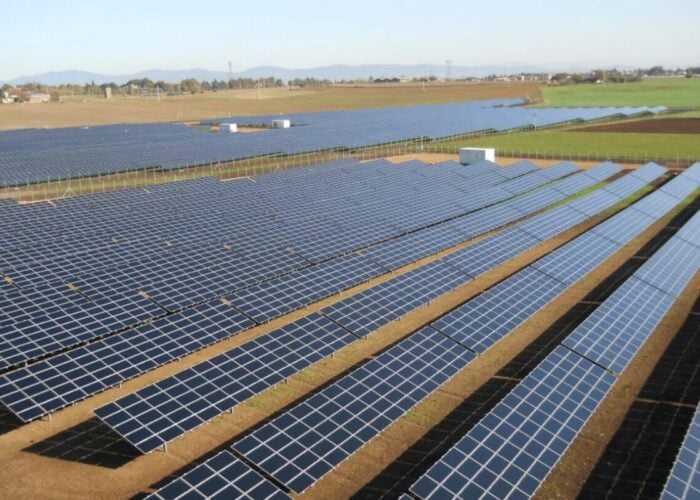
Renewables developer Plenitude will deploy perovskite-silicon tandem solar PV modules at a pilot solar project in the US.
The company—a subsidiary of Italian energy giant Eni—will deploy perovskite tandem modules from US perovskite startup Swift Solar at an unspecified project, according to Swift Solar. The pilot site will seek to test the performance and durability of Swift Solar’s technology under utility-scale outdoor conditions.
Try Premium for just $1
- Full premium access for the first month at only $1
- Converts to an annual rate after 30 days unless cancelled
- Cancel anytime during the trial period
Premium Benefits
- Expert industry analysis and interviews
- Digital access to PV Tech Power journal
- Exclusive event discounts
Or get the full Premium subscription right away
Or continue reading this article for free
“Major developers don’t run pilots unless they see real commercial potential, and this reflects Plenitude’s interest in exploring next-generation solar,” said Joel Jean, CEO and co-founder of Swift Solar. “We’re seeing the same urgency from customers across industries. Everyone wants higher performance and more secure domestic supply chains.”
Perovskite-silicon tandem solar technology offers higher conversion efficiencies, meaning more power generation per panel compared with current industry-standard silicon cell technologies. But the material is very unstable and degrades at rates which have prevented any commercial adoption of the technology to date.
Swift Solar is one of a number of companies looking to win the race to commercialise perovskite technology, with firms and research institutes in the US, Europe and China pursuing different configurations and versions of silicon and perovskite layers in solar cells. The pack leader is widely regarded to be Oxford PV, the self-styled “perovskite company” from the UK, which last year claimed to have sold the first commercial perovskite modules to an unnamed US buyer.
For its part, Swift Solar recently secured a contract with the US Department of Defence (recently rebranded the Department of War) to deploy perovskite tandem modules at a cyber warfare exercise in Virginia. This followed US$27 million in funding in June last year to support its technology development; the funding came from Eni Next, the corporate venture capital arm of Eni, Plenitude’s parent company.
Swift said it expects its modules to reach efficiencies of “28% or higher”, compared with the peak efficiencies of around 25% available in commercial modules today. In a public statement, the company said that with the expected surge in electricity demand from US data centres, “this efficiency advantage becomes increasingly valuable, enabling maximum power generation from limited land while reducing installation costs and improving project economics.”
Interest in perovskite tandem products is certainly high, and the technology seems to be getting closer and closer to meaningful commercial use. But challenges still present themselves, most notably the durability and stability issues with perovskite. More established technologies, like tunnel oxide passivated contact (TOPCon), which entered the mainstream of solar manufacturing last year, have made headlines in recent months as technical experts have unearthed issues with longevity and degradation at the cell level.
This creates risks for project returns and energy production which perovskite will have to overcome if it is going to take of at scale.
Read more of our coverage of perovskite technology here (premium access).






